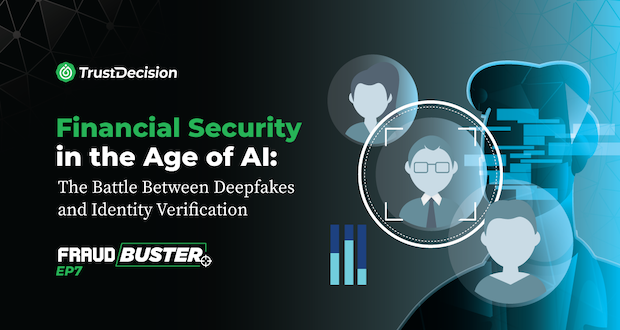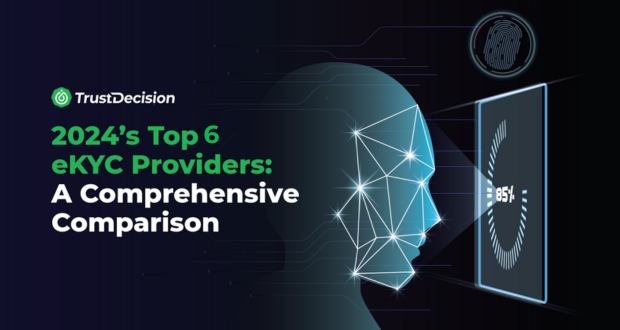Introduction
In today’s digital landscape, facial recognition technology has become increasingly prevalent. From unlocking smartphones to securing access to sensitive data, businesses and individuals rely on biometric authentication systems for convenience and security. However, alongside this adoption comes the need for robust security measures. Liveness detection plays a crucial role in ensuring that facial recognition systems can differentiate between genuine, living individuals and fraudulent attempts.
The Importance of Liveness Detection
Liveness detection refers to the process of confirming that biometric data, such as facial images, originates from a real person rather than a spoofed or manipulated source. Without effective liveness detection, malicious actors can exploit vulnerabilities in facial recognition systems, potentially compromising security and privacy.
Challenges Posed by Spoof Attacks
Spoof attacks involve presenting fraudulent biometric data to deceive the system. Common spoofing techniques include using paper masks, 3D masks, deepfakes, and video impersonation. These attacks can lead to unauthorized access, identity theft, and financial losses for businesses. Therefore, understanding and implementing effective liveness detection strategies are critical for safeguarding against such risks.
Understanding Liveness Detection
Liveness detection algorithms leverage machine learning techniques to analyze and validate biometric data. Here’s how they work:
- Feature Extraction: Liveness detection algorithms extract relevant features from facial images, such as texture, color, and shape. These features help distinguish between real faces and spoofed ones.
- Dynamic Analysis: Dynamic cues, such as eye movement, blinking, and head rotation, provide valuable information. Liveness detection algorithms analyze these dynamic patterns to verify the authenticity of the presented face.
- Texture Analysis: Real skin exhibits subtle texture variations due to blood flow and muscle movement. Algorithms compare texture patterns to identify signs of vitality.
- Challenges and Solutions: Liveness detection faces challenges, including adaptive spoof attacks and variations in environmental conditions (lighting, camera quality, etc.). Researchers continually improve algorithms to address these issues.
Common Spoofing Techniques
Let’s explore some common presentation attacks used by malicious actors:
- Paper Mask: An attacker creates a lifelike mask resembling the victim’s face. These masks can fool basic facial recognition systems.
- 3D Mask: More sophisticated than paper masks, 3D masks replicate facial features in three dimensions. They can bypass simple liveness checks.
- Deepfake: Deepfake technology generates realistic videos by superimposing a person’s face onto another body. Liveness detection must identify such manipulated content.
- Video Impersonation: Attackers use pre-recorded videos of a genuine user to trick facial recognition systems. Liveness detection must differentiate between live and recorded video streams.
- Injection Attacks:Injection attacks involve injecting synthetic biometric data into the system. For example, an attacker may inject fake fingerprints or iris patterns. Liveness detection algorithms should be resilient to injected data and recognize when the input is not from a live source.
Challenges with Standard Facial Recognition Systems
While facial recognition technology has made significant strides, traditional systems still face several limitations. These challenges impact their reliability and effectiveness:
- Vulnerability to High-Quality 3D Silicone Masks and Deepfakes:
- Standard facial recognition systems primarily rely on 2D images captured by cameras. As a result, they can be fooled by high-quality 3D silicone masks or deepfake videos.
- Sophisticated attackers can create lifelike masks or manipulate videos to impersonate someone else. These techniques bypass basic liveness checks.
- Dependence on Lighting Conditions:
- Traditional systems perform best in well-lit environments. Adequate lighting ensures clear facial features and minimizes shadows.
- However, variations in lighting (such as low-light conditions or harsh backlighting) can affect recognition accuracy. In real-world scenarios, lighting is rarely consistent.
- Aging, Facial Hair, and Geometry:
- Human faces change over time due to aging. Wrinkles, sagging skin, and other age-related factors alter facial appearance.
- Facial hair (beards, mustaches) can also impact recognition. A person may look different with or without facial hair.
- Additionally, variations in facial geometry (e.g., different angles, expressions) challenge recognition algorithms.
- Need for Comprehensive Solutions:
- To address these challenges, researchers and developers are exploring comprehensive solutions:
- Multi-Modal Approaches: Combining facial recognition with other biometric modalities (such as voice recognition or iris scanning) enhances overall security.
- Dynamic Liveness Detection: Real-time analysis of dynamic cues (blinking, head movement) helps verify the presence of a live person.
- Texture Analysis: Algorithms that analyze skin texture variations can detect signs of vitality.
- Behavioral Biometrics: Studying user behavior (typing patterns, gait) adds an extra layer of authentication.
- Anti-Spoofing Techniques: Advanced algorithms can identify deepfakes and other presentation attacks.
- 3D Facial Scanning: Moving beyond 2D images to 3D scans improves accuracy and resilience to spoofing.
- To address these challenges, researchers and developers are exploring comprehensive solutions:
AI-Based Liveness Detection Solutions
Distinguishing Real Humans from Impersonations
Sophisticated algorithms lie at the heart of AI-based liveness detection mechanisms. These algorithms play a pivotal role in distinguishing genuine human faces from still photographs, deep fakes, and other presentation attacks. Here’s how they work:
- Primary Defense Against Presentation Attacks:
- AI-driven liveness detection serves as the primary defense against various presentation attacks:
- Virtual Reality (VR): Ensures that the presented face is not a virtual avatar.
- 3D Masks: Detects whether the face is real or a high-quality 3D mask.
- Replay Attacks: Identifies pre-recorded videos or images.
- High-Quality Print Attacks: Detects printed photos or masks.
- By analyzing dynamic cues (such as blinking, head movement, and texture variations), these algorithms verify the authenticity of the presented face.
- AI-driven liveness detection serves as the primary defense against various presentation attacks:
- Real-Time Processing with 3 Dimensional Scanning:
- Traditional 2D facial recognition systems rely on static images. In contrast, AI-based liveness detection leverages real-time 3D dimensional scanning.
- By capturing depth information and analyzing facial geometry, these systems improve efficiency and accuracy.
- Real-time processing ensures timely responses, crucial for security applications.
- Measures Against Injection Attacks:
- Injection attacks attempt to bypass liveness detection by injecting manipulated data into the system.
- AI algorithms incorporate measures to detect and prevent such attacks:
- Texture Analysis: Analyzing skin texture variations to identify signs of vitality.
- Behavioral Biometrics: Studying user behavior (typing patterns, gait) adds an extra layer of authentication.
- Anti-Spoofing Techniques: Advanced algorithms can identify deepfakes and other presentation attacks.
- Multi-Modal Approaches: Combining facial recognition with other biometric modalities enhances security.
Enhancing Accuracy and Empowering Organizations
Liveness detection enhances the accuracy and reliability of facial recognition systems, benefiting organizations in several ways:
- Robust Security: By preventing spoof attacks, businesses can safeguard sensitive data, secure physical access points, and protect financial transactions.
- User Experience: Accurate liveness detection ensures a seamless user experience without compromising security.
- Compliance: Organizations operating in regulated industries (such as finance or healthcare) can meet compliance requirements by implementing robust liveness detection.
- Fraud Prevention: Detecting fraudulent attempts early reduces the risk of identity theft and financial losses.
- Scalability: AI-based solutions can scale efficiently to handle large user bases.
Industry Trends and Future Directions
Increasing Adoption of Liveness Detection Across Sectors
Liveness detection is no longer limited to niche applications; it has gained widespread adoption across various sectors. Here are some notable areas where liveness detection plays a crucial role:
- Healthcare:
- In healthcare, liveness detection enhances patient privacy and security. Biometric authentication ensures that only authorized personnel access electronic health records (EHRs) or medical devices.
- Telemedicine platforms use facial recognition for identity verification during virtual consultations.
- Liveness detection also prevents medical fraud by ensuring that patients are physically present during telehealth sessions.
- Finance and Banking:
- Financial institutions rely on biometric authentication for secure transactions. Liveness detection prevents unauthorized access to online banking accounts.
- Mobile banking apps use facial recognition to verify users during login or fund transfers.
- ATMs equipped with liveness detection reduce the risk of card skimming and identity theft.
- Travel and Border Control:
- Airports and border control agencies use liveness detection to verify travelers’ identities.
- Automated passport control gates employ facial recognition for seamless entry and exit processes.
- Liveness detection enhances security by preventing the use of stolen passports or fraudulent identities.
- Retail and Customer Experience:
- Retailers use facial recognition for personalized customer experiences. Liveness detection ensures that loyalty program members receive targeted offers.
- Self-checkout kiosks verify users’ identities, reducing the risk of fraudulent transactions.
Research Challenges
While liveness detection has made significant strides, several research challenges remain:
- Generalization of Accurate Models:
- Liveness detection models must generalize well across diverse populations, lighting conditions, and camera types.
- Researchers continue to explore transfer learning and domain adaptation techniques to improve model robustness.
- Evolving Public Datasets for Evaluation:
- Publicly available datasets for liveness detection evaluation need to evolve. These datasets should cover a wide range of spoofing attacks and real-world scenarios.
- Researchers and organizations can collaborate to create comprehensive benchmark datasets.
- Continued Advancements in AI and Machine Learning:
- As AI techniques evolve, liveness detection algorithms must keep pace.
- Deep learning architectures, explainable AI, and adversarial training are areas of active research.
Conclusion
In conclusion, liveness detection remains a critical component in securing biometric authentication systems. Decision makers should stay informed about technological innovations and risk management strategies. By adopting robust liveness detection mechanisms, organizations can protect user privacy, prevent fraud, and enhance overall security.
Remember, the face is not just an identity; it’s a bio-metric gateway to secure interactions in our digital world. Stay vigilant, stay informed, and embrace the power of liveness detection!









.jpeg)




